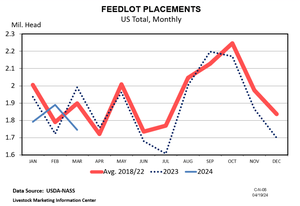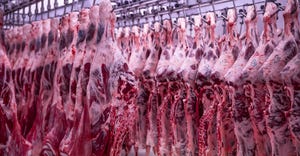It’s hard to find the romanticism in ranching when you and your cows are up to your knees in water and mud.
May 29, 2019
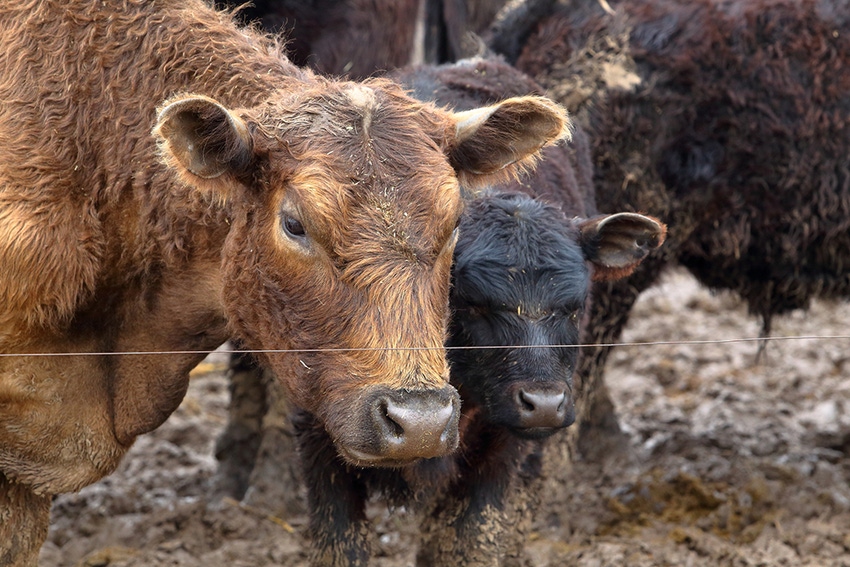
Amy G. Hadachek
If there’s a silver lining to the winter and spring that South Dakota ranchers have endured, it’s this: No one is talking drought.
But ranchers are most certainly talking about the weather.
“We calve on the range and are sure getting tired of the weather.” That’s how South Dakota rancher Larry Stomprud summed up the latest seasons which have been affecting many South Dakota farmers and ranchers. Stomprud, of Mud Butte, who is immediate past-president of South Dakota Cattlemen’s Association, said ranchers have been dealing with a double whammy from this past late winter Arctic blast that challenged young calves and depleted the hay piles that cattle need to eat.
The big struggles have been mud, slow growing pastures and death losses in calves due to mud or chilling snow and rain. “Fortunately, we’ve not experienced any health issues. After three blizzards within 10 days in 2009, we made some changes that have addressed the problem of late winter or spring adverse weather,” Stomprud told LivestockWx.com.
“We’re turning bulls out later than we used to. We also built several five to 10-acre ‘traps’ in our pastures to keep heavies confined during adverse weather events so we can watch them easier, and we installed windbreaks.
“Even with all that, we made the choice to bring all our heavies into our corrals during this last blizzard. It was a mess, but we didn’t lose any calves during that storm.”
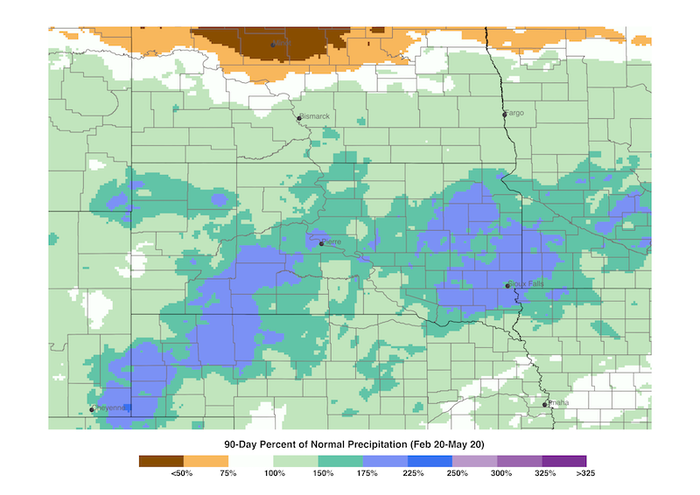
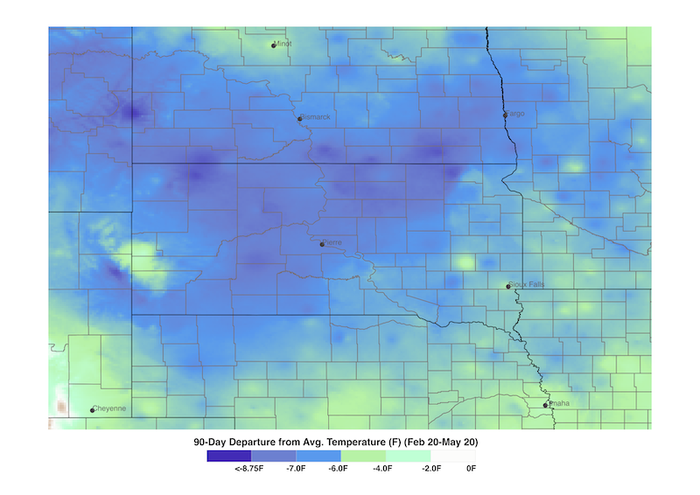
Eric Jennings, who ranches near Spearfish, S.D., said after two consecutive years calving in extreme winter conditions, several cattlemen and women are dealing with some sickness in calves, including scours and pneumonia.
“It’s been very similar to last year’s blizzard. Although snowstorms have been one-to-three day deals…I personally have not had any losses with the storms although I have talked to several ranchers who told me the storms have been severe enough that cattle crowded into shelters…and some calves ended up with broken legs. One calf was injured in its middle. A few died,” said Jennings, vice president of South Dakota Cattlemen’s Association.
Calving challenges
On top of February’s grueling -56 degree wind chills, South Dakota has recently been dealing with flooding from the James River. As eastern South Dakota is very flat, there’s been standing water in fields.
“We’ve had a lot of rain since the snow melted. During early May, from west to east brought 2 to 3 inches of rain from Wall to Brookings. No question; it was a really difficult calving season,” said Laura Edwards, South Dakota State University Extension state climatologist.
Early cold weather beginning in January required producers to feed cows more hay and feed to help livestock through negative temperature degree days. “Even with the extra feed, many cows didn’t come out of the winter in as good of body condition as we’d like them to be going into calving,” said Taylor Grussing, cow-calf field specialist at Mitchell Regional Extension Center, Mitchell, S.D.
“This snowballed into more calving issues than normal; decreased colostrum quality due to thinner cows, and calves not getting as much nutrition in their first hours of life as we’d like to see.”
Besides losing calves in the cold, death losses have also resulted more recently from the mud and rain. “In fact,” Grussing relayed, “I heard just recently of a producer losing three cows in the mud, and with that happening, we know that we’re losing calves, too.”
Also, with a late spring and delayed planting, many producers are still feeding cows as they wait to go to grass. “That’s further decreasing the hay supplies.”
At least with excess moisture, South Dakota ranchers hope to have plenty of grass to graze when their livestock does get to pasture. “Continue communicating with your management team of other ranchers, financial advisers, veterinarians, nutritionist. Remember you aren’t alone in this,” Grussing recommends.
She suggests monitoring for potential pneumonia cases or other chronic issues with livestock challenged by El Niño’s fierce later winter.
Available assistance
For cattle ranchers who need assistance, the livestock indemnity program has business management specialists within Extension and FSA. “This program saved many livestock producers last year, and I expect it to do the same for some cattlemen, depending on which or how many snow or rain storms they got hit with in 2019 so far,” she said.
“We recommend taking pictures and documenting every death loss so ranchers have records if they decide to turn in losses.” She also suggests communicating with a veterinarian who can stop by the ranch and review health protocols and assist with health documentation.
Hadachek is a meteorologist and storm chaser as well as a freelance writer who lives on a farm and cow-calf operation with her husband in north central Kansas.
Source: Livestock WX, which is solely responsible for the information provided and is wholly owned by the source. Informa Business Media and all its subsidiaries are not responsible for any of the content contained in this information asset.
You May Also Like
